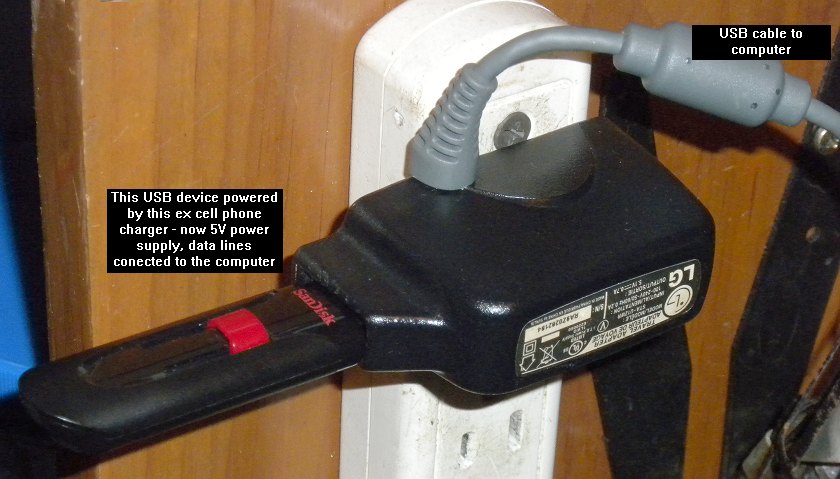
Some cell or smart phones can be recharged off a USB port, and there are plug in chargers designed to provide
the 5V over the same USB cable that was used to connect that phone to a computer. Here this charger
is modified to make its USB connector's data lines able to be connected to a computer's USB port. This
mod is mostly a mechanical thing, you crack open the charger's case to get access to the circuit
board. Obtain a USB cable (keep the end with the type A plug attached) and strip the other end to
have the green, white, black, shield and red wires available. My cable came off a Microsoft Xbox
accessory; I kept its molded on cable strain relief. Keep the exposed wires short, use heatshrink
to insulate the braid shield wires. Look at the data connections of the USB connector that is mounted
on the circuit board, they are likely shorted together. Separate them, probably you can cut the trace
between them.
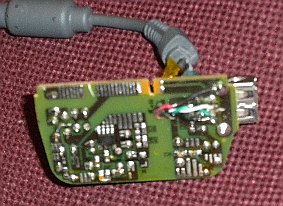
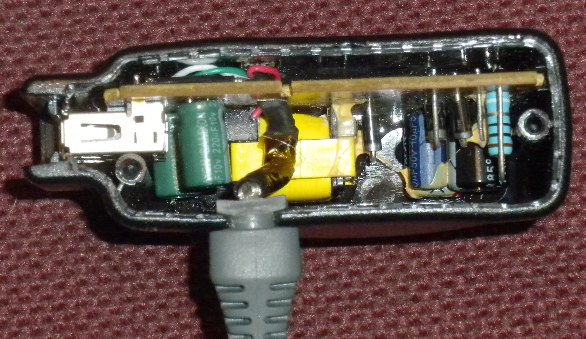
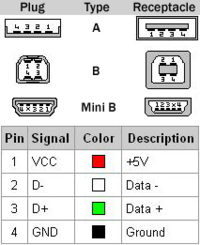
To get the USB wires to the back side of the circuit board, I drilled a hole in the circuit board in an empty area, away from the
"hot" (non isolated line connected) circuitry. Connect the USB cable wires as per the table upper
right, but leave the red wire unconnected. Tuck the red wire under some heat shrink or some other
secure method to keep it disconnected and to not touch anything. Carefully test it (as you'd have
exposed powerline portions exposed) with a thumb drive, and be sure your computer can see this
thumb drive. Check you didn't get the data lines backwards or shorted if it doesn't work right.
Assuming success, reassemble the charger, cutting a slot or hole in its case to pass the new USB cable.
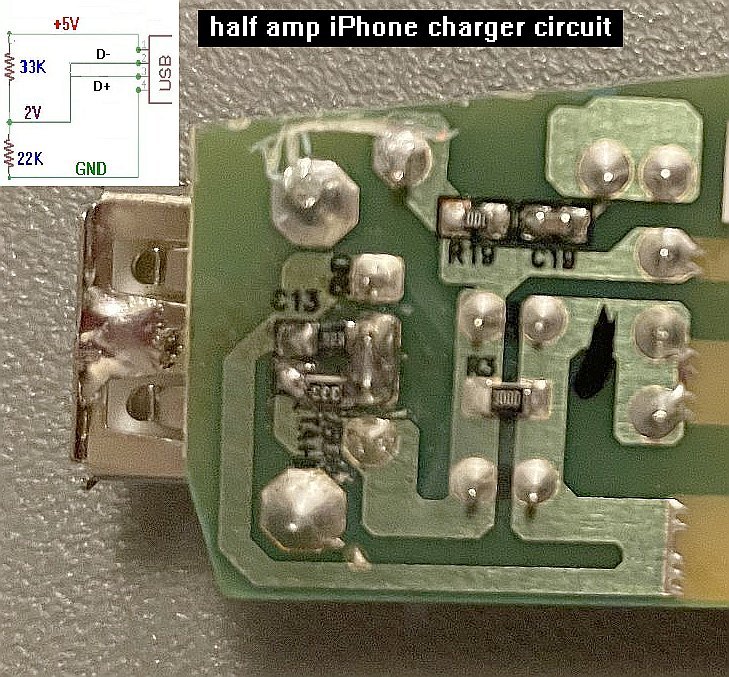
The voltage divider circuit, produces 2VDC and that feeds the D+ and D- USB lines (these can be shorted together here),
telling, via a lightning cable, the iPhone's battery charger circuit to only draw a half amp
to charge its battery. Most chargers will let the iPhone draw a full amp to quickly charge its battery.
The half amp rate will be slower, but it should be easier on the battery. And are the wires in those thin
lightning cables really thick enough to do 1 amp?
All you need to do to modify a generic USB charger wall wart (once
you manage to crack it open) is to add the voltage divider. I used a couple of SMD resistors (22K to ground, and 33K to +5V)
soldered at the USB connector, as you can see in the picture (this charger is different than the one at the
top of this page). .





